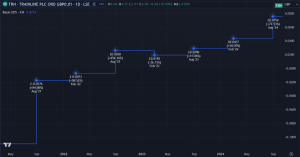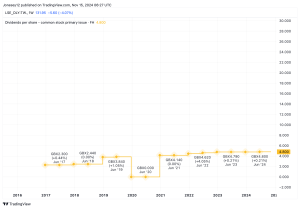Since last week’s election, the US stock market has experienced a frenzy of activity, with both the S&P 500 and Dow Jones Industrial Index (DJI) reaching new highs.
The S&P 500 had its best week in a year, crossing the key 6,000-point mark for the first time in history. The DJI was right behind it, breaching 44,000 points for another historic first.
Sectors that did particularly well include financials, energy and industrials. On the flip side, consumer staples, utilities and property stocks suffered.
To add to the excitement, the Federal Reserve initiated another quarter-point interest rate cut last Thursday. The benchmark rate’s now down to around 4.625%. It’s now near the same level it was in December 2007, incidentally around the same time the last global financial crisis began.
Stock market winners and losers
When the market closed on Friday, the three S&P 500 stocks leading the charge that day were Motorola Solutions, up 7.37%, Tesla, up 8.19% and Fortinet (NASDAQ: FTNT), up 9.99%.
The worst-performing stocks on Friday were semiconductor giant Super Micro Computer, software firm ANSYS and private healthcare company Centene.
With Elon Musk’s vocal support of Trump, it’s no surprise Tesla enjoyed a big boost following the election result. The stock’s now up 24% since the Republican candidate’s win was announced early Wednesday morning.
Trump’s proposed tariffs on foreign imports is likely a key driver of this growth, since low-cost Chinese electric vehicles (EVs) threaten Tesla’s market dominance in the US.
There’s even been talk of Musk taking a role in the new administration.
Eye-catching Fortinet
The outlying stock that caught my attention last week was cybersecurity company Fortinet, one of my own holdings. The company designs and manufactures firewalls, gateways and endpoint security solutions for both large enterprises and smaller businesses. These provide a high level of protection against cyber threats such as malware, ransomware, and phishing attacks.
Fortinet’s big jump last week was helped by strong third-quarter financials released on 7 November. It recorded impressive results, with a gross margin of 83.2% and an operating margin of 36.1%.
Revenue grew 13% year on year, reaching $1.51bn, driven largely by a 19% rise in service revenue. Free cash flow came in at $572m.
The company also expanded its share repurchase programme by $1bn, leaving $2.03bn authorised for future share buybacks. Guidance for the 2024 full year has now been raised to between $5.86bn and $5.92bn.
However, Fortinet also provided a cautious outlook on several large deals that will mature at the end of Q4. This could suppress earnings. In addition, it noted tough competition from large vendors that are delivering discounted bundles which could threaten Fortinet’s pricing model.
Tariffs on imports may also affect the company, although this would depend on the specific goods targeted and its global supply chain. An increase in the cost of foreign electronic components could force it to push up prices, reducing its competitive edge. Conversely, a reduction in cheaper solutions from foreign competitors could improve its market share locally.
This post was originally published on Motley Fool







